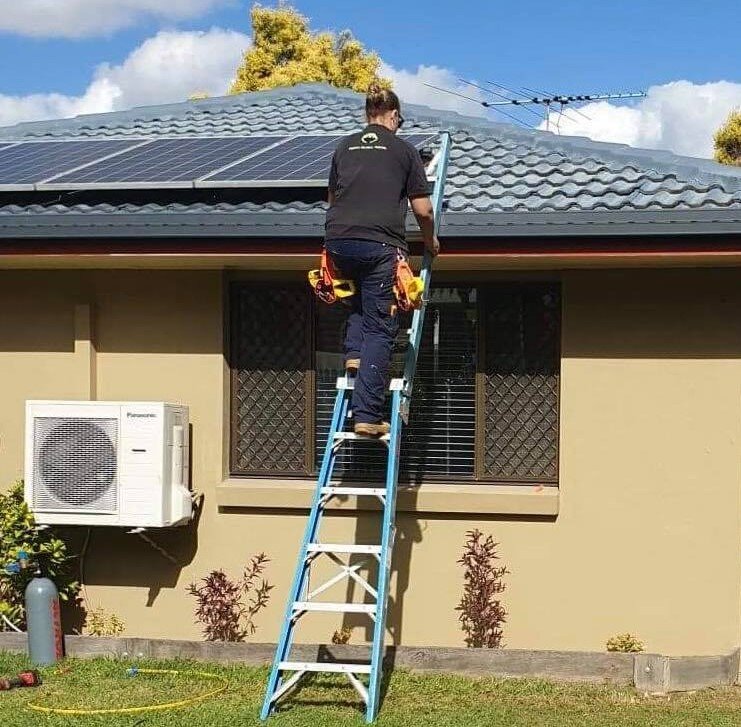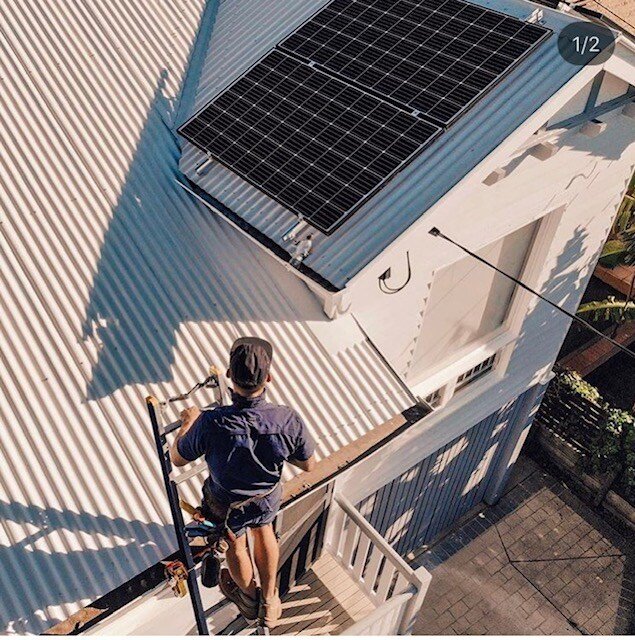Roofing ladder safety
How use a ladder to access a roof securely?
Working on a roof is potentially hazardous, with almost one in five deaths in the construction industry related to roof job. Deaths and injury are mostly caused by falling from roof edges or openings, through unstable materials or roof lights. However, most of these calamities can be prevented or reduced by implementing a suitable program that educates people (including workers and ladder users) regarding how to access the roof. This must be planned to guarantee the usage of the safest access method for the work being carried out.
Improper ladder use has serious implications. In the US, more than 500,000 people per year are required to receive medical treatments as a result of ladder falls, this is mostly related to jobs accessing roofs. Also, more than 300 people die annually from ladder-related injuries. Therefore, it is urgent to address this issue and implement proper measures to encourage the use of ladder safety equipment.
It is estimated that the annual cost of ladder injuries in the United States is $24 billion, this includes work loss, medical, legal, liability, and pain and suffering expenses. The main causes of this major issue are incorrect extension ladder setup angle, Inappropriate ladder selection, Insufficient ladder inspection, Improper ladder use, Lack of access to ladder safety tools and information and lack of usage of alternative ladder safety devices.
How can I prevent a fall from a ladder?
Check your ladder before you use it.
Before beginning a job, you should always perform a ‘pre-use’ check to spot any obvious visual defects to make sure the ladder is safe to use.
Check the stiles, make sure that they are not bent or damaged. Check the feet and rungs. Check any locking mechanisms.
Always Inspect your ladder before using it. Do not use a ladder with structural damage.
Clean your ladder regularly. A clean ladder is far safer than a dirty ladder.
Do not check a ladder by jumping up and down on it or using excessive force to test for strength and integrity.
Wear Personal Protective Gear
Appropriate trousers.
Protective footwear.
Safety helmets.
Safety glasses and Knee pads
Key issues are
Safe access to roofs
Roof edges and openings
Fragile surfaces
Roof Work Safety
Roofing safety is critical. The construction industry accounts for most workplace-related injuries related to working at heights using a ladder.
Roofing hazards are numerous and serious. Here are some roofing safety tips to improve safety:
Always use fall protection while working at 6' or higher
Always ensure that water is accessible on the roof to limit the number of times roofers must climb up and down the ladder
Ensure that protective footwear does not create a slip hazard for roofers
Do not permit untrained employees to work on a rooftop
Ensure that all roofers receive training on the hazards associated with roofing and on how to use personal protective equipment.
Roofing and DIY jobs
For DIY jobs you should implement a safety plan. Also, check your Supplies including a ladder suitable for wall height; ladder safety device; safety harness; 700kg breaking strain rope; soft-soled shoes.
Prepare and follow a Safety checklist, this needs to include:
Use a ladder safety device to secure your ladder.
Avoid working alone. You may need someone to steady the ladder and, if you do slip, assist you/call for assistance.
Check to make sure that the ladder is sound. If it is not possible to stand on firm, level ground, support the legs on firmwide chocks.
Wear non-slip closed footwear.
Do not step on old, very brittle terracotta tiles, as you may end up creating more damage.
If you feel unsafe or uncomfortable, climb down.
Ladder Precautions
Using an Extension to access a roof is a process that requires attention. Ladders are so common but these tools can still be extremely dangerous, The United States leads the world in ladder deaths. Please consider the following recommendations.
Face the ladder. At All Times face the ladder when climbing up or down.
Maintain a three-point connection. Keep a three-point connection with the ladder. This means that you take only one hand or foot off the ladder at a time.
Use a ladder safety device to secure and stabilize your ladder to the roof.
Keep others off. Do not allow others to climb your ladder at the same time.
The ladder should be at a 4:1 ratio. This means that for every four feet of height between the base and where the ladder contacts the building that you are leaning against, the base needs to be one foot away.
Make sure that the ladder is locked into place before ascending. Safety Check the ladder’s stability before placing your weight on it. Never move or adjust a ladder while somebody is on it.





